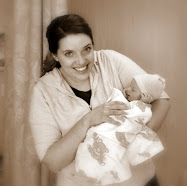By: Jennifer Block
Click HERE to read the article.
The randomized controlled trial provides the evidence base for "evidence-based medicine," the movement toward employing only those treatments that have passed rigorous clinical study. Considered to be the gold standard, the highest quality research evidence obtainable, the RCT is basically the classic high school science experiment: divide two groups of subjects with the same characteristics, assign one to treatment A and one to placebo, and observe the outcomes. ACOG's response is doubly ironic because obstetrics has arguably been the slowest specialty to adopt the philosophy of evidence-based care — indeed, most labor interventions became routine without any study whatsoever, and several, like continuous electronic fetal monitoring and episiotomy, continue to be used even though copious evidence has proved them unnecessary and potentially harmful.
They do have a point about there being no RCTs on home birth, which is often the same point Tuteur makes when she criticizes a study for not comparing apples to apples. But there's a good reason for it: how many women would agree to be randomly assigned to where they will give birth? Not many, researchers have found. "It has been shown that conducting a randomized controlled trial is not possible," write the authors of the Dutch home birth study. "Good quality observational studies are therefore the only source of evidence on this subject." In evidence-based medicine, observational studies are second-tier (because the characteristics of groups A and B are not tightly controlled), but with home birth — and breastfeeding, and other large questions about childbirth for which women will not be subjected to random assignation to answer — they are best evidence possible.
Which brings the debate over safety to a bit of an impasse: if the only research that will satisfy those with authority and power is research that is unfeasible, the controversy will never be resolved. There could be 20 more large, observational studies that come to the same conclusion as those that already exist, but they still wouldn't be randomized controlled trials. The home birth advocates would continue to say "The research proves it's safe!" and the American medical establishment would continue to say "The research isn't good enough!"
The physicians are of course entitled to their opinion, but this opinion is often presented as fact, with the weight of medical authority. An American Medical Association resolution passed last year states without qualification that " . . . the safest setting for labor, delivery, and the immediate post-partum period is in the hospital" or accredited birth center, and promises legislative action to discourage birth outside it. Again, there is no research cited to back up this claim — because there isn't any. "We don't have evidence that home is safer than hospital, or that hospital is safer than home," says Soo Downe, a researcher with the Cochrane Collaboration, the international authority on evidence-based medicine. "There's absolutely no evidence either way at the level of randomized controlled trials."
One of the reasons the medical side has a hard time accepting home birth is that they forget that there are risks to being in the hospital. "It appears that being in a big and busy place with the attitude that birth is dangerous until proven otherwise may bring risks to women," says Downe, like higher rates of unnecessary surgery and invasive procedures, separation of mother and baby, and emotional trauma. Melissa Cheney calls this phenomenon "multiple interpretations of risk." "The physicians are talking about dangers to baby, while the mother might be talking about the dangers to her own body, or the danger of feeling victimized by an unnecessary cesarean, and having to go on and parent from a position of victimization. Her definition of risk tends to be much broader."
These policies may increase the risk to women and babies. Cheney would like medical staff to see the home birth population as a cultural group, with its own language and value system, and for the staff to have a degree of cultural competency. The lack of cross-cultural understanding breeds hostility in the community and in the delivery room during a transport. "There can be a lot of mother blaming or midwife blaming," says Cheney. "This can produce a very very hostile environment, just at a time when it is crucial that the doctor and midwife communicate across that divide. The outcome is very dependent upon that communication."
Meanwhile, more and more American women want to give birth outside the hospital setting — and economists have shown huge potential cost savings in terms of health reform — yet physicians' groups are fighting to keep certified professional midwives marginalized, and in some states, criminalized. The ACOG and the AMA policies prohibit physicians from collaborating with CPMs, which contributes to the hostility, and which may in fact contribute to a birth outcome that's worse than if a woman's choice had been supported and the midwife and physician had been encouraged to collaborate. In other words, these policies may increase the risk to women and babies.
Many physicians do support home birth midwives, and they are furious that their professional organization would not only try to dictate what women should do, but also how they should practice. In an open letter castigating ACOG and AMA, Canadian obstetrician Andrew Kostaska, MD, urged the American obstetric establishment to "join the 21st century." "Informed choice is the gold standard in decision making, and it trumps even the largest, cleanest, randomized controlled trial," he wrote. "Science supports home birth as a reasonably safe option. Even if it didn't, it still would be a woman's choice . . . As scientific evidence supporting its safety mounts, however, [ACOG and AMA] will be forced to accede or get left behind."
Happy New Year!
7 hours ago



No comments:
Post a Comment